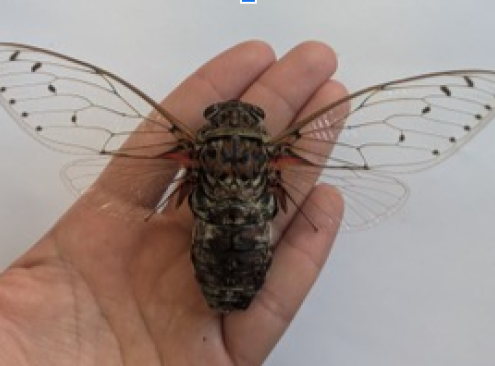© Pint of Science, 2025. All rights reserved.
Join us for an event exploring nature-inspired design, sustainability, and the future of fashion. Discover how insect wings inspire hybrid materials, learn about the Doughnut framework balancing social and environmental boundaries, and explore innovative solutions for recycling yarn to tackle the growing concerns of fast fashion. A journey into sustainable innovation awaits!
Wings of Inspiration
Sepideh Khodaparast
(Associate Professor, Biomimetic Functional Interfaces Group at School of Mechanical Engineering)
Technological developments demand discovery of novel materials with desired yet hard-to-attain properties. An alternative approach is to combine several components to achieve hybrid composites or add new physical forms and structures to existing materials to achieve supreme properties. But there is no textbook guideline for this, so where do we start from to make sure that we end up with a sustainable functional design? Join us to follow one of our favourite journeys of learning to design from nature, dissecting the delicate yet resilient wings of insects.

How good are doughnuts!
Dr Valeria Tolis
(Lecturer in climate change governance, School of Earth and Environment, Sustainability Research Institute)
Achieving sustainability involves ensuring social justice while protecting natural resources. Raworth’s “Doughnut” framework combines environmental boundaries with social boundaries: the outer boundary is the environmental ceiling, and the inner boundary represents social foundations. Between these boundaries lies a space where humanity can thrive. This talk explores the relationship between social and environmental aspects of sustainability, focusing on trade-offs and compatibilities, with examples of Doughnut applications in local governance.

Coming apart at the seams - how unravelling knitwear can contribute to a circular economy
Ruth Cherry
(PhD candidate UoL Sustainable Textile Manufacturing.)
Globally, there are increasing concerns about the volume of clothing production and consumption. In the last 15 years production has doubled, whereas the use of clothing has decreased – we are buying more clothing and wearing it less.
How would we dress ourselves without new clothes to buy?
As a hand knitter of limited skill and even less attention to detail, unravelling projects is familiar to me. But when we discuss recycling, there is very little academic research exploring the possibility of reusing yarn.
My project considers what industry and academia can learn from craft practices.
How would we dress ourselves without new clothes to buy?
As a hand knitter of limited skill and even less attention to detail, unravelling projects is familiar to me. But when we discuss recycling, there is very little academic research exploring the possibility of reusing yarn.
My project considers what industry and academia can learn from craft practices.

Map data © OpenStreetMap contributors.
Other Crowd of Favours events
2025-05-20
Hidden Climate Stories: Rivers, Roots, and Resilient Spaces
Crowd of Favours
4-12 Harper St, Leeds, LS2 7EA, United Kingdom
2025-05-19
Who am (A)I? Tech that matters
Crowd of Favours
4-12 Harper St, Leeds, LS2 7EA, United Kingdom




